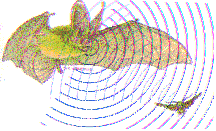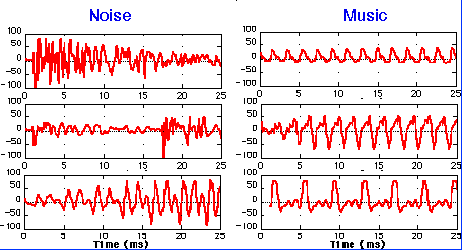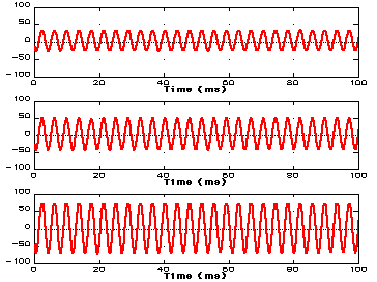

Sound is a longitudinal wave that is transmitted through the air and detected by our ears. Good human ears can detect sound from about 50 Hz to about 20,000 Hz (20 kHz); this can be called the audible range of frequencies. As people grow older, we loose our ability to detect high frequencies so the highest frequencies that a middle-aged person is able to detect may be about 15,000Hz or even 12,000Hz.
Sound with frequencies below about 50 Hz may be felt by our bodies rather than heard by our ears. Such very low frequencies are called infrasonic.
Sound with frequencies above our hearing sensitivity are known as ultrasonic. Dogs can hear much higher frequencies than humans; that is why a dog whistle may not be heard by humans. Sound with these ultrasonic frequencies are used for such things a sonograms that give a picture of the inside of a person's body without requiring surgery.
Sonograms, like the one in here, are common during pregnancies but they are also used in diagnosing tumors and other conditions.


Bats emit ultrasound with a frequency of about 50,000 Hz (50 k Hz) to 100,000 Hz (100 kHz) and then listen for an echo or sound reflected from flying insects. This is known as echolocation.

Dolphins use a similar method of echolocation to find their way underwater.
For each increase in air temperature of one degree, the speed of sound increases 0.6 m/s.

Speeds greater than the speed of sound are called supersonic.
Noise is sound that is not periodic.
Musical sound is periodic.

Loudness is connected to amplitude.

|
|
|
||
(C) 2003, Doug Davis; all rights reserved